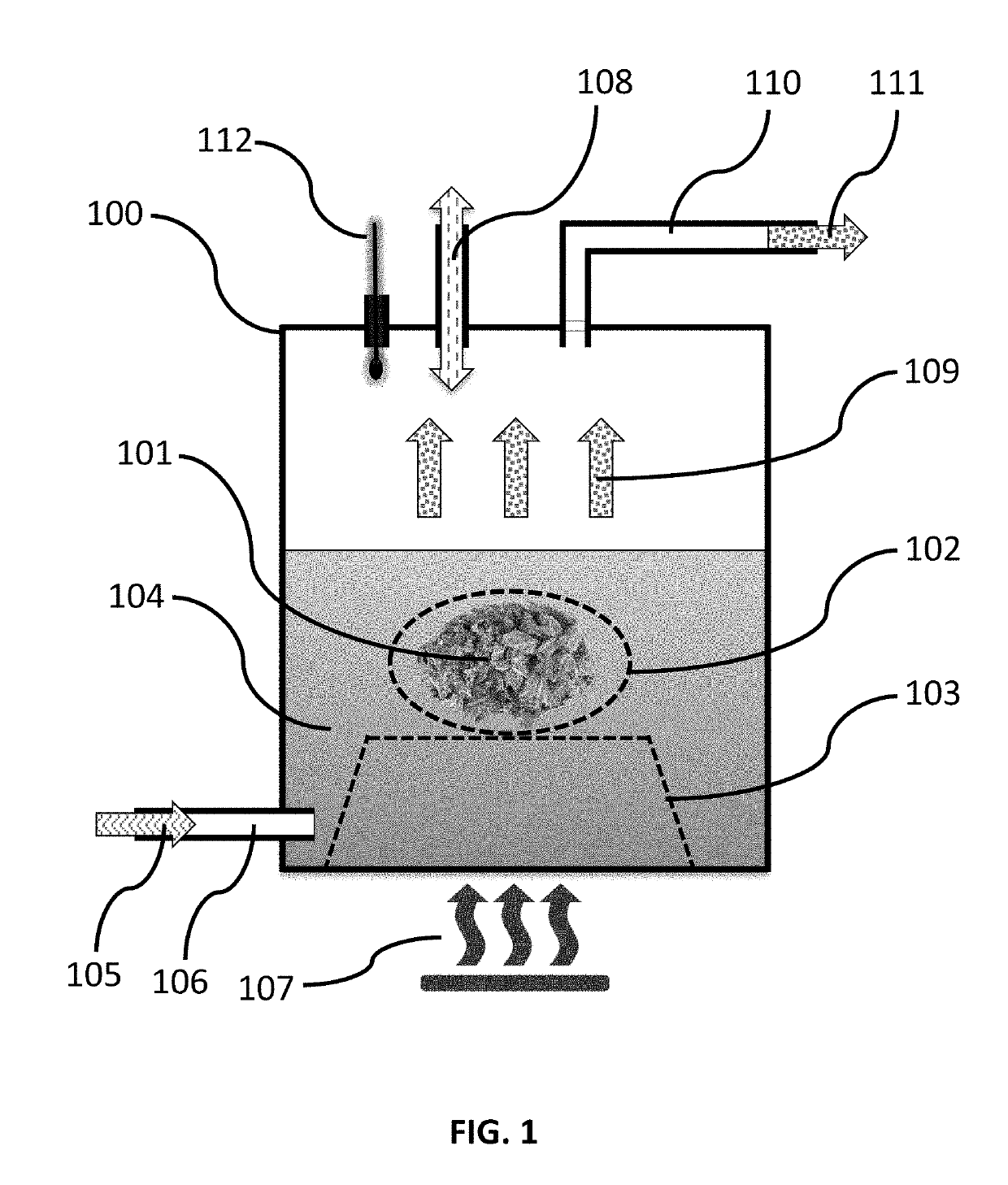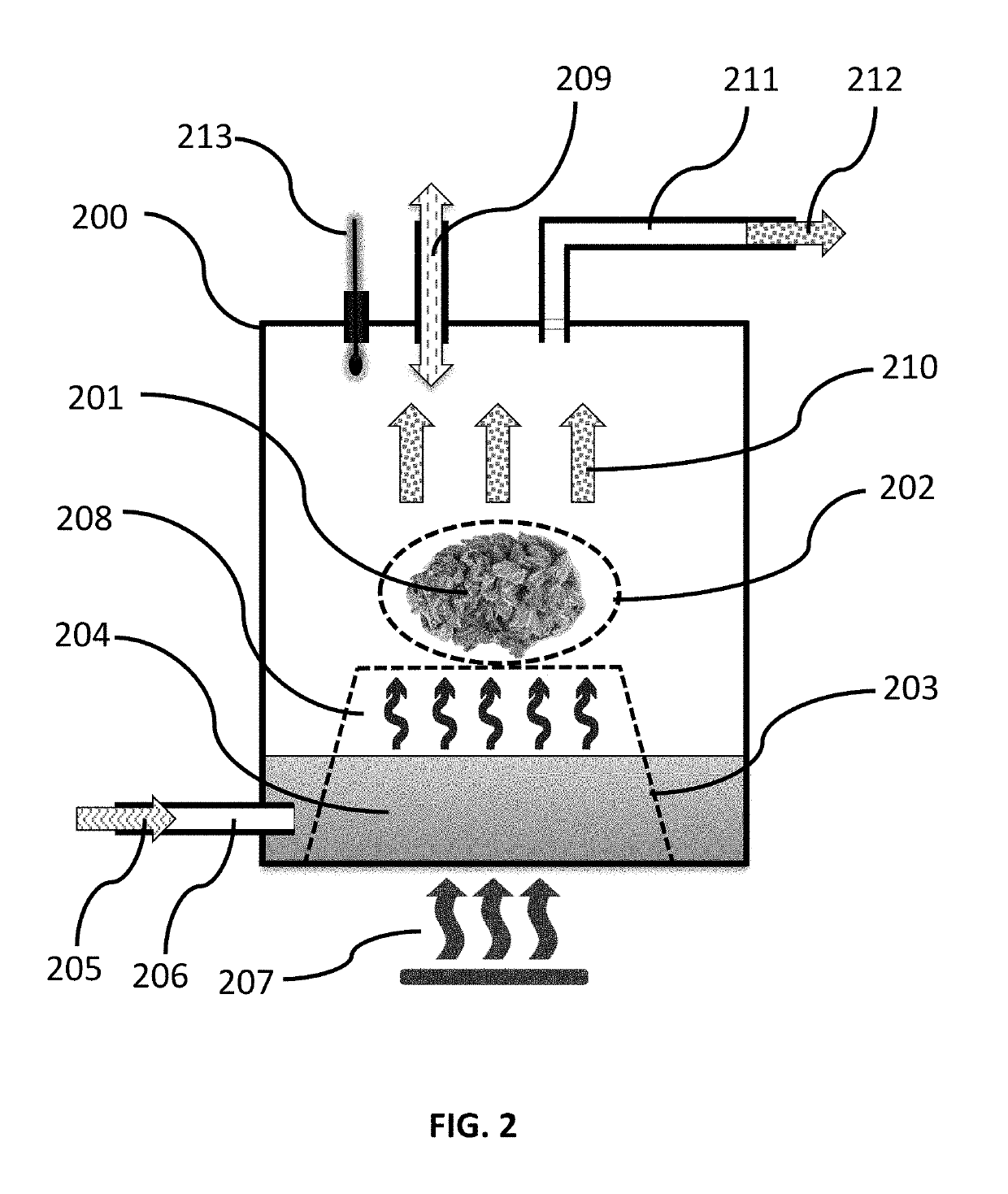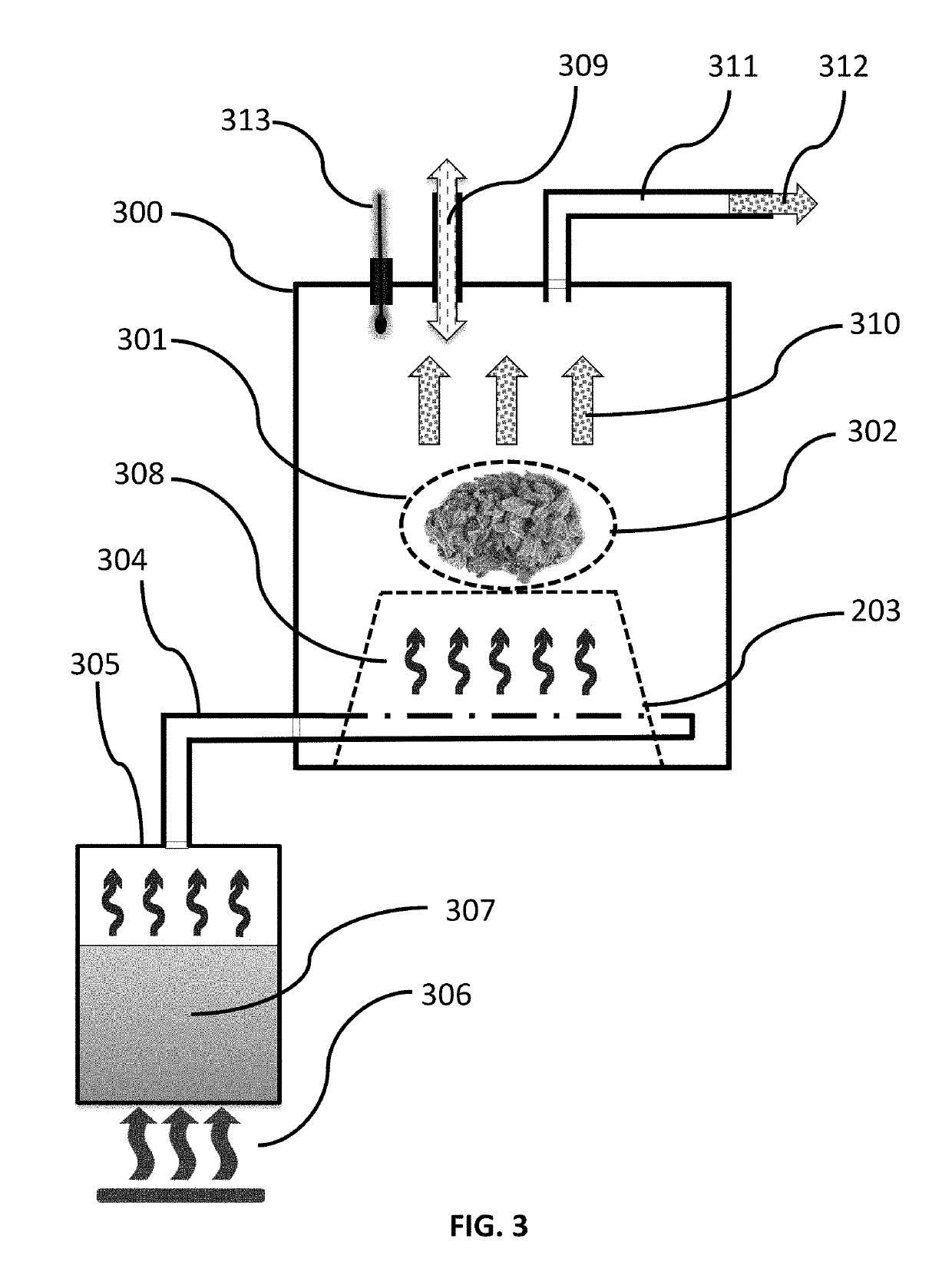Odorless Cannabis Products and Processes for Their Preparation
a technology of odorless cannabis and products, applied in the field of odorless cannabis products, can solve the problems of unfavorable cannabis smoke, high cannabis fragrance, frequent undesirable effects, etc., and achieve the effect of reducing the visual and tactile qualities of the plant material, increasing or decreasing the pressure of the system
- Summary
- Abstract
- Description
- Claims
- Application Information
AI Technical Summary
Benefits of technology
Problems solved by technology
Method used
Image
Examples
example 1
[0142]In a first example, a hydrodistillation process was practiced, such as disclosed above. Dried and unground cannabis plant material (i.e., intact whole trimmed buds) was placed within a five liter stainless steel distillation vessel, and sufficient water was added to the vessel to fully cover the plant material. The plant material was maintained submerged in a loose fashion underneath the water level, and was not contained in any separate containing means. The vessel was then loosely covered, to allow for steam to escape. The temperature of the water in the vessel was raised, by contact between the vessel and a gas cooktop. The water in the vessel was brought to a boil. After 30 minutes, the cover of the vessel was removed, to ensure that there was still sufficient water in the vessel to cover the plant material, and more water was added to ensure that the plant material would remain submerged during another 30 minute session.
[0143]In total, three 30-minute sessions were perfor...
example 2
[0149]In a second example, a hydrodistillation process was practiced in primary respects similar to that of Example 1, however a single session of 2.5 hours was performed, instead of multiple sessions with additional water added in between. This permitted the maintenance of a more consistent temperature and pressure in the vessel, without intermittent temporary reductions due to opening the vessel for the replacement of boiling water with water at a lower temperature.
[0150]The resulting cannabis plant product was subsequently dried as above, and then submitted for testing and analysis to Steep Hill Labs. As with the plant product of the above example, Steep Hill Labs also analyzed the Example 2 plant product for terpene content. A certificate of analysis was obtained for a terpene test of the product (Sample identification BK12225-2), which reported the terpene compound profile in Table 3 below:
TABLE 3Terpene%mg / gβ-CaryophylleneNot DetectedCaryophyllene oxideNot DetectedCitronellolN...
example 3
[0153]In a third example, a single 2.5 hour steam distillation process was performed, with the cannabis plant material suspended above the water level in the distillation vessel rather than being submerged. The cannabis plant material was placed as whole trimmed buds (i.e., not ground or pulverized) into a porous metal strainer that sat above the water line and allowed for steam to pass through, but retained all of the plant material inside during the process.
[0154]The resulting cannabis plant product was subsequently dried as above, and then submitted for testing and analysis to Steep Hill Labs. As with the plant product of the above examples, Steep Hill Labs also analyzed the Example 3 plant product for terpene content. A certificate of analysis was obtained for a terpene test of the product (Sample identification BK12226-2), which reported the terpene compound profile in Table 5 below:
TABLE 5Terpene%mg / gβ-CaryophylleneNot DetectedCaryophyllene oxideNot DetectedCitronellolNot Dete...
PUM
| Property | Measurement | Unit |
|---|---|---|
| Fraction | aaaaa | aaaaa |
| Fraction | aaaaa | aaaaa |
| Fraction | aaaaa | aaaaa |
Abstract
Description
Claims
Application Information
 Login to View More
Login to View More - R&D
- Intellectual Property
- Life Sciences
- Materials
- Tech Scout
- Unparalleled Data Quality
- Higher Quality Content
- 60% Fewer Hallucinations
Browse by: Latest US Patents, China's latest patents, Technical Efficacy Thesaurus, Application Domain, Technology Topic, Popular Technical Reports.
© 2025 PatSnap. All rights reserved.Legal|Privacy policy|Modern Slavery Act Transparency Statement|Sitemap|About US| Contact US: help@patsnap.com



